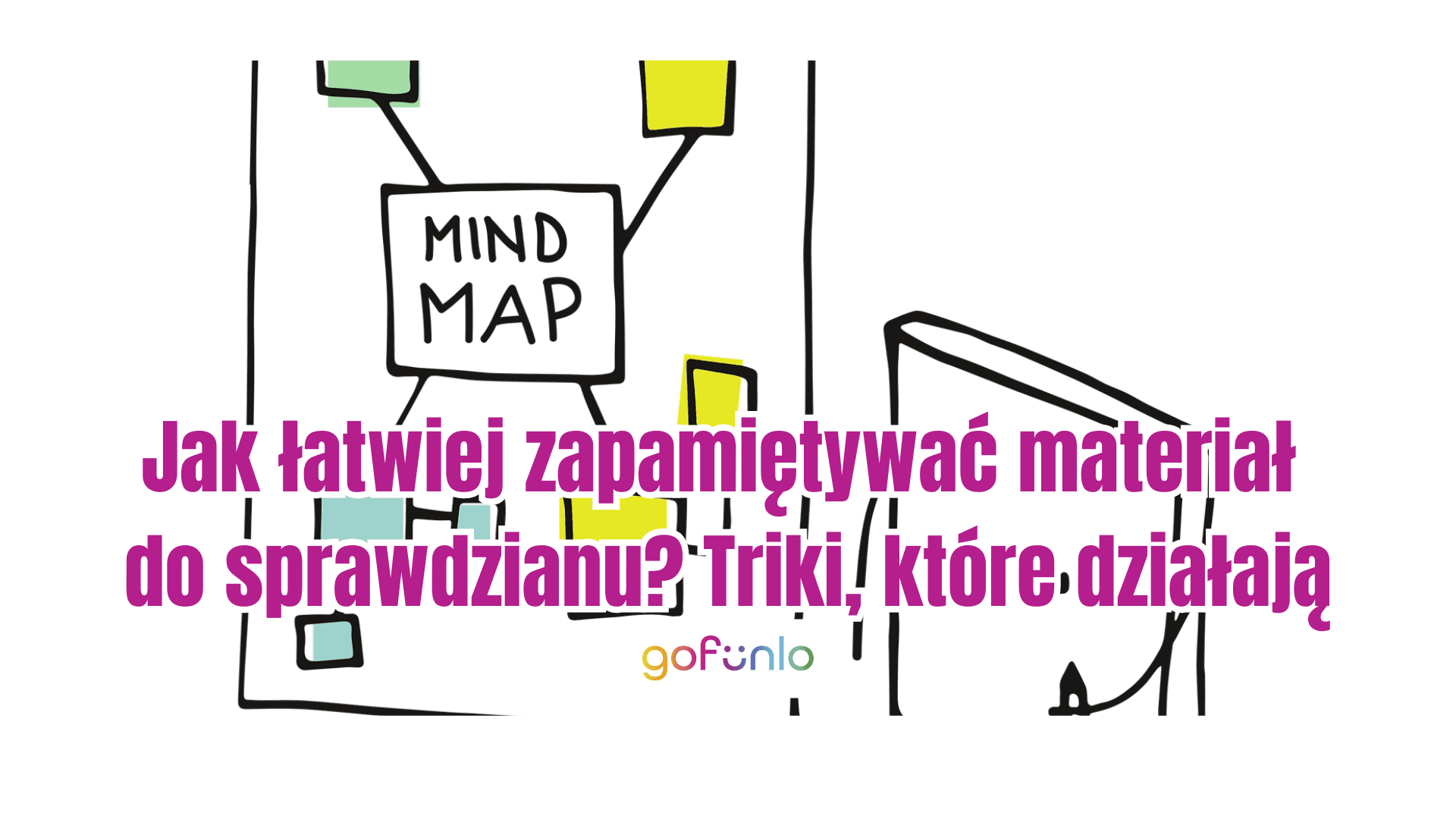How to Remember Material for a Test More Easily? Tricks That Work

🧠 Understanding the Material – The Key to Effective Learning
Before you start memorizing details, it’s worth taking the time to truly understand the material. When you grasp the connections between facts and their context, it's much easier to remember and recall information. Instead of simply writing down dates or definitions, try to understand why something happened and how it relates to other facts.
Example: Understanding the Pattern, Not Just Memorizing Dates
For instance, when studying history, rather than just memorizing dates, it's more effective to understand the causes of events and their significance. This makes it easier to remember the dates, as they become part of a larger narrative.
Benefits:
Long-term retention: Understanding helps you remember information for longer.
Easier recall: Connections make it easier to retrieve details from memory.
Less stress: When you understand the topic, studying feels more logical and less overwhelming.
So before you start memorizing, take the time to understand the material — it's a crucial step toward effective learning.
🍅 The Pomodoro Technique – Studying in Time Blocks
The Pomodoro Technique is a popular time management method based on studying in short, focused time blocks. It involves working for 25 minutes (called a "Pomodoro"), followed by a 5-minute break. After four such cycles, you should take a longer break — about 15–30 minutes. This method helps students stay focused on studying while avoiding fatigue and burnout.
Benefits:
Better focus: Short time blocks help maintain high concentration throughout the study session. Knowing you have only 25 minutes makes it easier to stay on task.
Prevents burnout: Regular breaks refresh your mind and help prevent the tiredness that can lead to burnout. This way, you can stay productive for longer.
Less stress: Breaking study time into small stages makes the process feel less overwhelming. Instead of worrying about studying all day, you focus on short tasks, which reduces pressure.
How to Get Started:
Set a timer for 25 minutes (on your phone, computer, or with a dedicated Pomodoro app).
Focus fully on studying during that time.
When the timer ends, take a 5-minute break (stretch, drink water, take a walk).
After four sessions, take a longer break.
The Pomodoro Technique is an effective way to boost productivity and keep your energy levels high while studying — especially useful during intense test preparation.
🧠 Mind Maps – Visualizing the Material
Mind maps are a tool that allows you to visually represent information in a graphic format. They’re a great way to organize and remember material, especially when dealing with definitions, concepts, processes, or complex topics. Creating a mind map involves starting with a central idea and then adding related topics as branches that form a logical structure. You can use colors, symbols, or drawings to make remembering easier.
How to Create Mind Maps:
Start with the main topic: Place the key concept in the center of your page or screen (e.g., “French Revolution”).
Add main categories: Draw lines from the central idea to the main categories (e.g., “Causes”, “Events”, “Consequences”).
Expand with subtopics: Each category can have subpoints that explain details (e.g., under “Causes” – “Public dissatisfaction”, “Social inequality”).
Use colors and drawings: Coloring different parts of the mind map makes it easier to distinguish topics and boosts memory. Images help create stronger mental associations.
Advantages of Mind Maps:
Better understanding: Visual presentation makes it easier to understand and retain information. Mind maps support better associations, which helps with recall.
Connecting topics more easily: They allow you to spot links between different areas. This leads to a more complete understanding — for example, connections between historical events, chemical processes, or mathematical theories.
Improved organization: Mind maps help structure knowledge clearly, making it easier to grasp and remember.
Example Use:
If you're studying ecosystems, your mind map might look like this:
Center: “Ecosystem”
Categories: “Types of ecosystems” (e.g., forests, oceans, deserts), “Processes in ecosystems” (e.g., photosynthesis, water cycle)
Subpoints: Details related to each process or type of ecosystem
Mind maps are a powerful tool for organizing knowledge and understanding the material more deeply — which leads to more effective learning.
🧠 Using Mnemonics – Easier Memorization of Difficult Facts
Mnemonics are techniques that help you remember difficult information by creating strong associations in your memory. They make it easier to learn facts, definitions, and processes. Here are some popular methods:
Examples of Mnemonic Techniques:
Acronyms:
Create abbreviations using the first letters of words.
Example: For the planets of the Solar System (in Polish):
“Moja Wielka Ziemia Marzy Już Starą Unieważnioną Nadzieją” (to remember the order of the planets).
Rhymes:
Rhythmic phrases help memorize tricky information.
Example:
“Merkury, Wenus, Ziemia, Mars / Jowisz, Saturn, Uran, Neptun.”
Storytelling:
Turning facts into a story makes them easier to remember.
Example: To remember the causes of the French Revolution, create a story about people frustrated by high taxes and social inequality.
Why Do Mnemonics Work?
Mnemonics help form lasting connections in memory, making information easier to recall. Transforming knowledge into rhymes, images, or stories improves retention and makes learning more effective.
📚 Breaking Down the Material – How Not to Get Overwhelmed by Studying
Dividing your study material into smaller parts is an effective method to avoid feeling overwhelmed by the amount of content. Instead of trying to absorb everything at once, it's better to break the material into smaller, thematic segments. Studying in short time blocks (e.g. 30 minutes) with regular breaks helps you stay focused and retain details more effectively.
How to Do It:
Break material into topics: Instead of reading an entire book or chapter at once, focus on just one topic or section at a time.
Set priorities: Concentrate on the most important subjects first, and leave the less critical ones for later.
Plan short sessions: Studying in 20–30 minute blocks helps keep your mind fresh and prevents fatigue.
With this approach, the material becomes more manageable and easier to learn — and you’ll avoid that overwhelmed feeling.
👥 Studying with Friends – Group Revision Sessions
Studying in a group is a great way to learn more effectively. Group review sessions allow you to share knowledge, quiz each other, and gain different perspectives on the same material. This makes it easier to remember complex topics and see them from a new angle.
Benefits of Group Study:
Peer quizzing: You can do mini-quizzes or mock tests together to reinforce what you've learned.
Knowledge sharing: Everyone can contribute something valuable to help others understand the material.
Different perspectives: Discussions can clarify tough topics that may be harder to grasp alone.
Helpful Tools:
Messenger or WhatsApp groups: Great for quickly sharing materials and asking questions.
Google Docs: Ideal for collaborating on notes or solving tasks together.
Trello: Helps organize group study sessions and track progress.
Studying with friends is both effective and motivating — a smart strategy for better learning.
🛌 The Role of Rest and Sleep in Memory Retention
Sleep and rest are essential for memory. While you sleep, your brain consolidates newly acquired knowledge, making it easier to retain. Without proper rest, your ability to remember and understand information drops significantly.
Tips for Effective Rest:
Avoid studying right before bed: Give your brain time to relax instead.
Take regular breaks: A break every 25–30 minutes helps maintain focus and avoid burnout.
Sleep and rest are the foundations of effective memory and successful learning.
See also:

